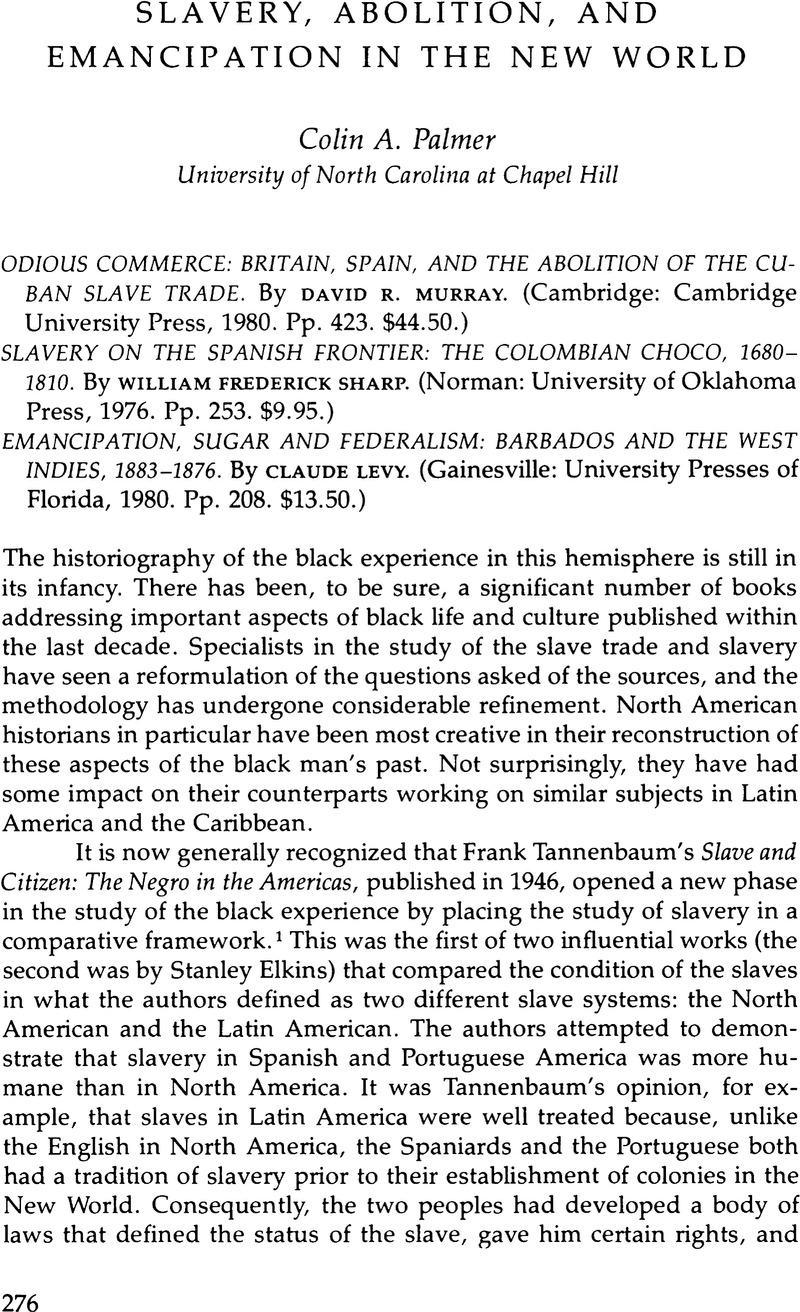No CrossRef data available.
Published online by Cambridge University Press: 24 October 2022

1. Frank Tannenbaum. Slave and Citizen: The Negro in the Americas (New York, 1946).
2. Ibid., p. 52.
3. Stanley Elkins. Slavery: A Problem in American Institutional and Intellectual Life (Chicago, 1958), p. 37.
4. See Frederick Bowser, The African Slave in Colonial Peru 1524–1650 (Stanford, 1974); Franklin Knight, Slave Society in Cuba during the Nineteenth Century (Madison, 1970); Gwendolyn Hall, Social Control in Slave Plantation Societies: A Comparison of St. Domingue and Cuba (Baltimore, 1971); Herbert Klein, Slavery in the Americas: A Comparative Study of Virginia and Cuba (Chicago, 1967); Carl Degler, Neither Black Nor White: Slavery and Race Relations in Brazil and the United States (New York, 1971).
5. Consult Eugene Genovese, Roll Jordan Roll: The World the Slaves Made (New York, 1974); Herbert Gutman, The Black Family in Slavery and Freedom, 1750–1925 (New York, 1976); John Blassingame, The Slave Community: Plantation Life in the Antebellum South (New York, 1979); George Rawick, From Sundown to Sunup: The Making of the Black Community (Westport, 1972).
6. Leon Litwack, Been in the Storm So Long: The Aftermath of Slavery (New York, 1979).
7. Some of the best works on the slave trade include: Philip Curtin, The Atlantic Slave Trade: A Census (Madison, 1969); Herbert Klein, The Middle Passage: Comparative Studies in the Atlantic Slave Trade (Princeton, 1978); Roger Anstey, The Atlantic Slave Trade and British Abolition 1760–1810 (London, 1975); Leslie Bethell, The Abolition of the Brazilian Slave Trade: Britain, Brazil and the Slave Trade Question, 1807–1869 (Cambridge, 1970).